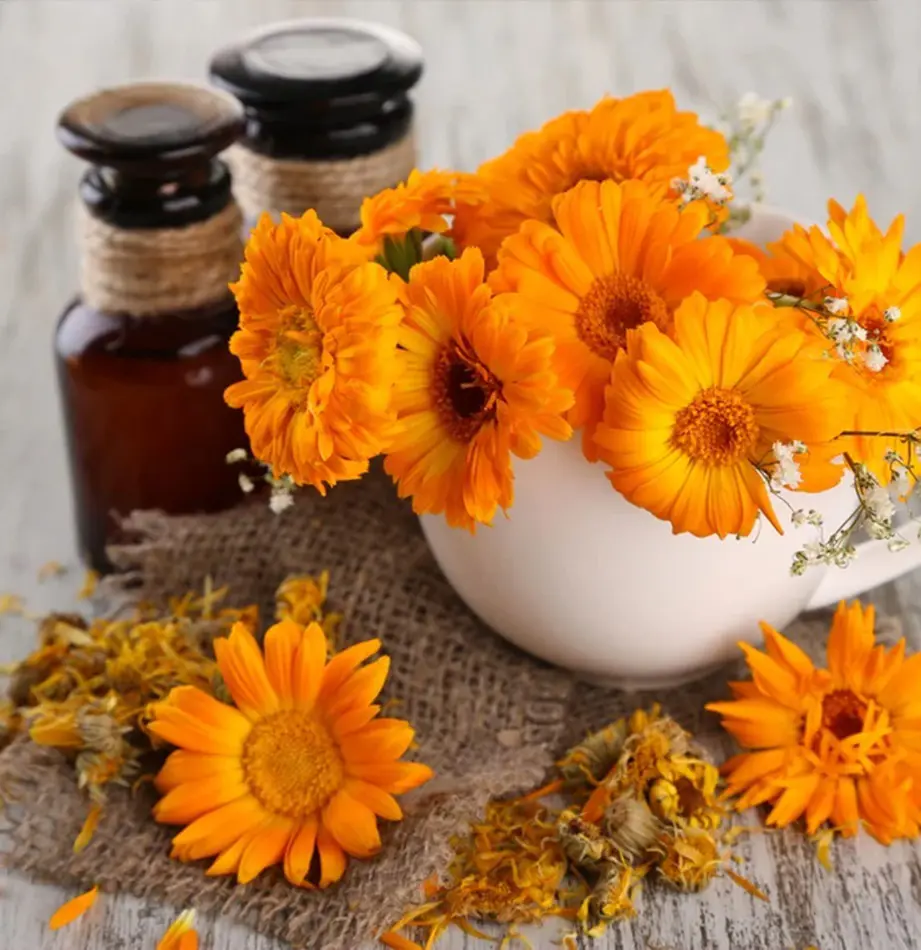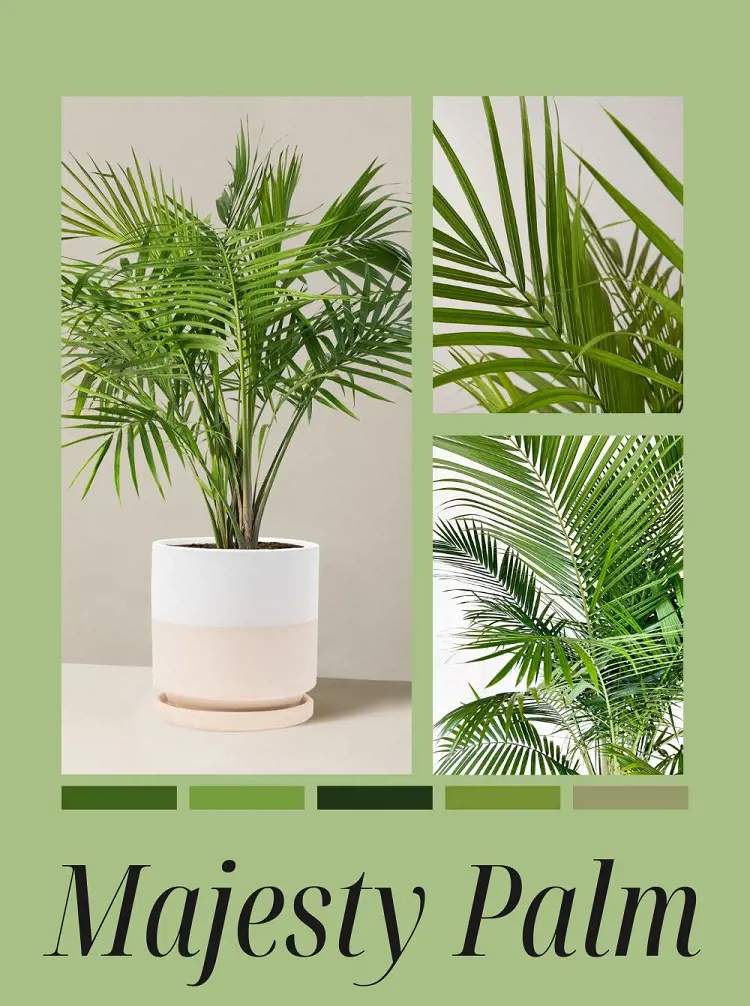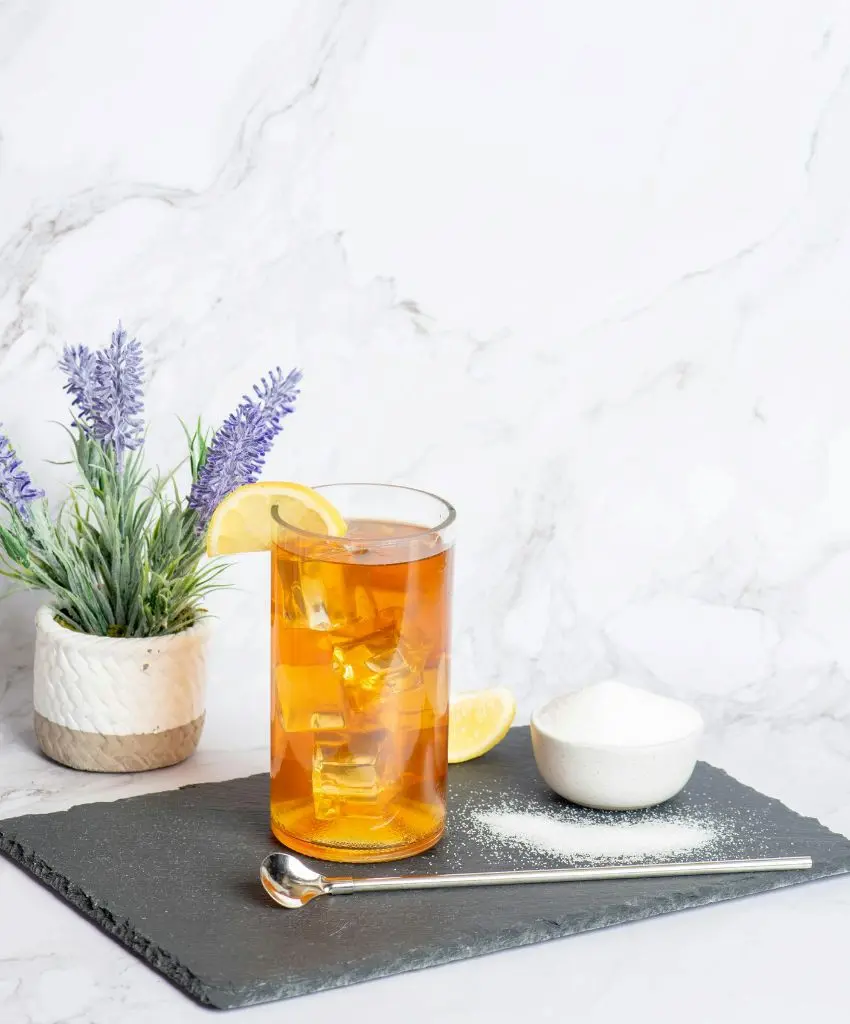Lucky Bamboo Turning Yellow: How To Fix
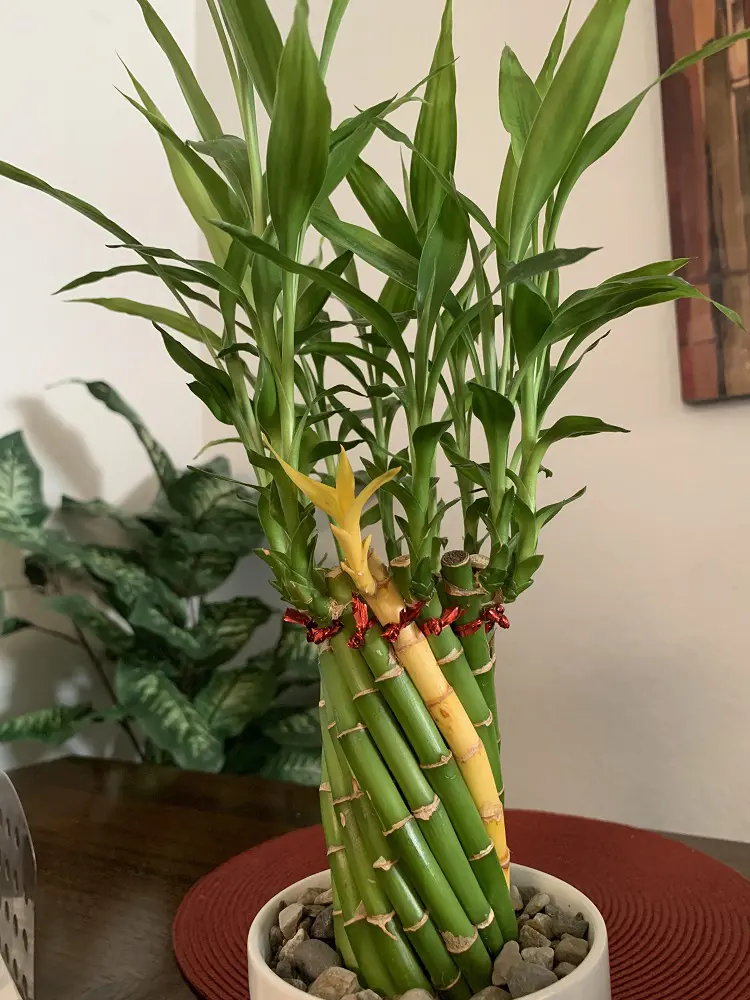
This post may contain affiliate links. If you make a purchase through links on our site, we may earn a commission.
Lucky bamboo (Dracaena sanderiana) is not a true bamboo but a resilient, low-maintenance houseplant. According to the philosophy of Feng Shui, the plant is believed to bring good luck.
Like many other houseplants, the lucky bamboo is also prone to yellow leaves. This issue may result from overwatering, inadequate light, or poor water quality.
Understanding The Causes
Yellowing in lucky bamboo leaves may stem from factors like overwatering, which leads to root rot, or exposure to direct sunlight, causing leaf burn. Poor water quality, such as chlorine or fluoride, can also contribute.
Monitoring factors ensures the vibrant greenery of lucky bamboo, promoting a healthier and more auspicious atmosphere in your living or working space.
Watering Issues
Watering issues can indeed cause lucky bamboo to turn yellow. Overwatering is a common problem, leading to waterlogged soil and root rot. It deprives the plant of oxygen and damages the roots, resulting in yellow leaves.
On the other hand, underwatering, or insufficient watering, can also cause yellowing as the plant becomes dehydrated. Striking a balance, maintaining moist but not soggy soil, and using distilled water help prevent these issues, ensuring the vibrant greenery and overall health of your lucky bamboo plant.
Lighting Problems
Lighting problems can contribute to lucky bamboo turning yellow. Too much direct sunlight can lead to leaf burn, causing yellowing and browning. Lucky bamboo prefers indirect, filtered light, making it essential to avoid harsh sunlight exposure. On the contrary, insufficient light, such as placing the plant in a dark corner, can also result in yellowing due to inadequate photosynthesis.
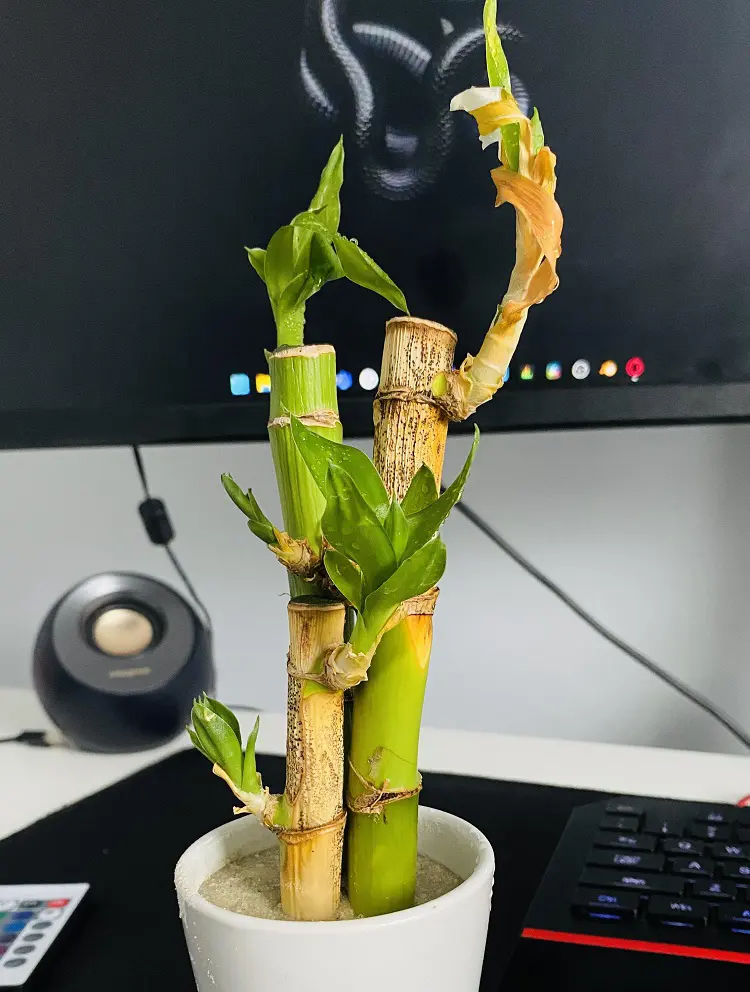
Nutritional Deficiencies
Nutritional deficiencies can indeed cause lucky bamboo to turn yellow. While lucky bamboo is generally low-maintenance, it still requires some nutrients for optimal growth. Yellowing leaves may indicate a lack of essential minerals like nitrogen, iron, or potassium.
Using a balanced liquid fertilizer designed for houseplants can help address these deficiencies. However, it's crucial not to over-fertilize as this can lead to other issues. Regularly providing a well-balanced fertilizer in moderation can ensure that the lucky bamboo receives the necessary nutrients for vibrant and healthy green foliage.
Other Potential Causes
Besides watering issues, lighting problems, and nutritional deficiencies, other potential causes for lucky bamboo turning yellow include:
- Container size: If the pot is too small, the plant may become root-bound, leading to stress and yellowing. Transplanting into a larger container can alleviate this.
- Water quality: Poor water quality, containing high levels of salts or chemicals, can impact the plant's health. Using distilled or filtered water is recommended.
- Temperature extremes: Drastic temperature changes or exposure to drafts can stress the plant, resulting in yellow leaves. Maintain a consistent and moderate temperature for optimal growth.
- Pests: Infestations by spider mites or other pests can damage the leaves, causing them to yellow. Regular inspection and appropriate pest control measures are essential.
Identifying The Actual Cause
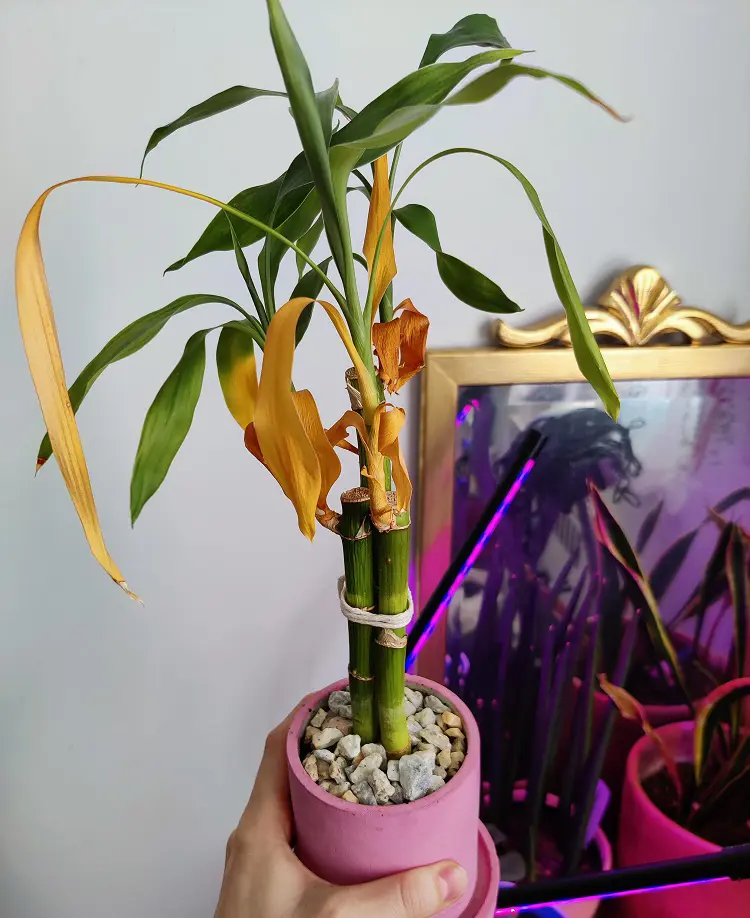
To identify the actual cause of yellowing leaves on your lucky bamboo, follow these step-by-step guidelines:
1. Examine Watering Practices: Check the soil moisture level. Stick your finger into the soil; if it feels excessively wet, you might be overwatering. Ensure proper drainage. Water should not accumulate at the bottom of the pot.
2. Assess Lighting Conditions: Evaluate the placement of your lucky bamboo. Ensure it receives indirect, filtered light and is not exposed to direct sunlight for prolonged periods. Adjust the position of the plant if it's in a spot with too little or too much light.
3. Inspect Nutrient Levels: Review your fertilization routine. Lucky bamboo generally requires a balanced liquid fertilizer every 2-4 weeks. Consider using a complete houseplant fertilizer with macro and micronutrients.
4. Check Pot and Soil: Examine the pot size. If the plant looks crowded or root-bound, consider repotting it into a larger container. Check for proper soil drainage. Soil should not be compacted or waterlogged.
5. Evaluate Water Quality: Assess the quality of the water you use. Consider switching to distilled or filtered water to avoid harmful chemicals or high salt levels.
6. Review Temperature and Environment: Ensure a consistent temperature range. Lucky bamboo prefers temperatures between 65-90°F (18-32°C). Protect the plant from drafts and sudden temperature changes.
7. Inspect for Pests: Examine the plant for pests like spider mites or scale insects. Look for webs, tiny insects, or unusual spots on the leaves. Treat any pest issues promptly with appropriate measures.
Treatment Options
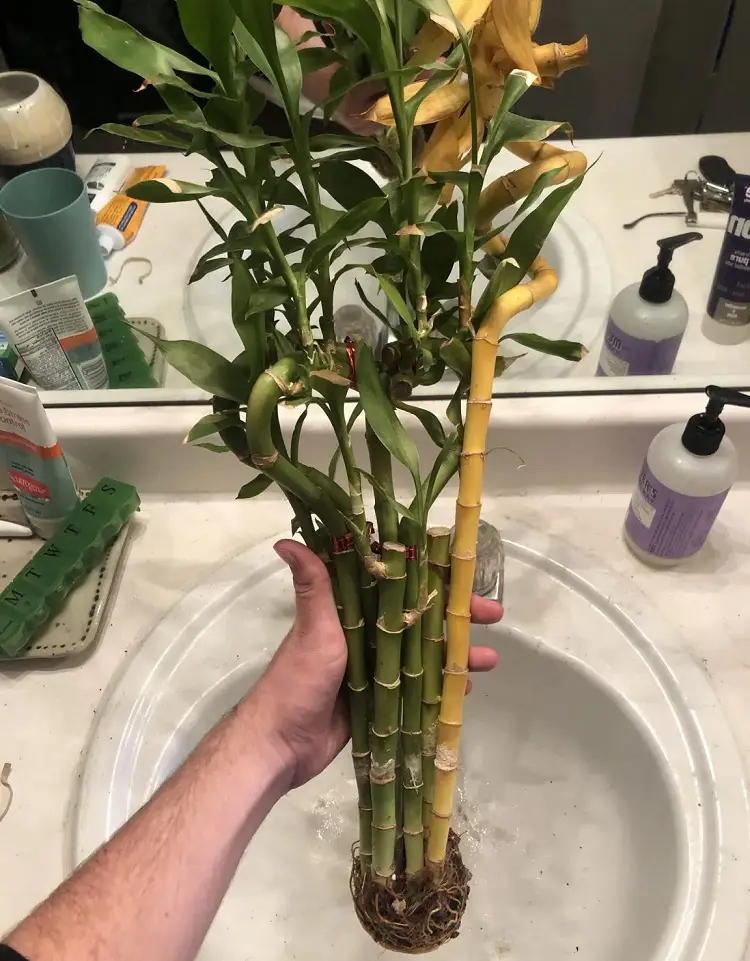
As per experts, implementing treatment options based on the identified cause will help revive your lucky bamboo and restore its vibrant green color. Regular monitoring and adjustments to the care routine will contribute to the overall health of the plant.
Fix Watering Issues
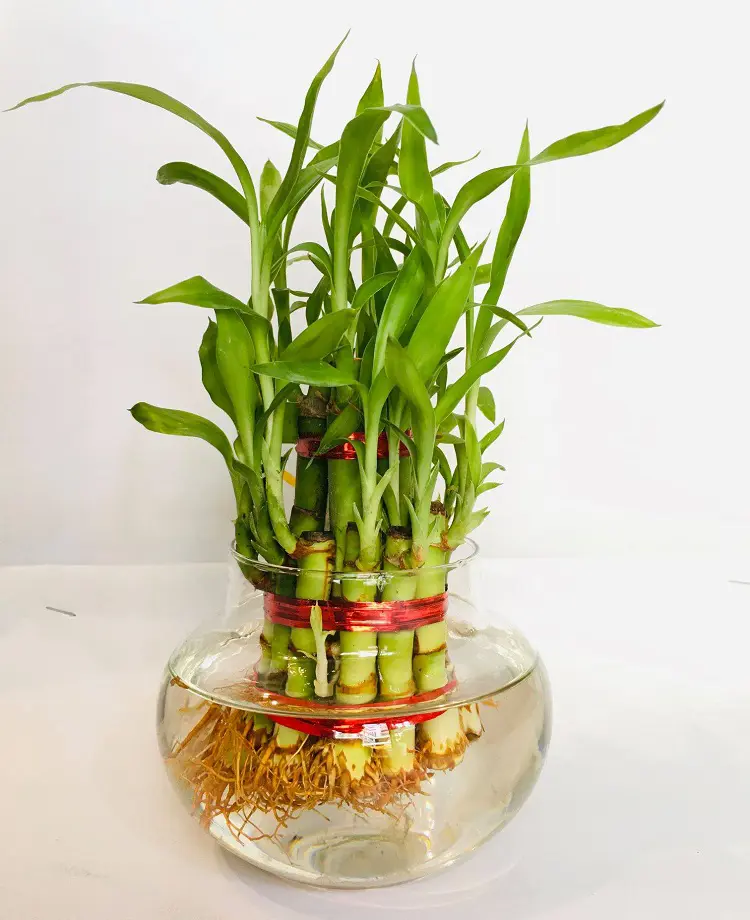
The first thing you need to fix is watering issues that may be affecting your lucky bamboo plant. Here's what you need to do for overwatering and underwatering issues:
- For Overwatering:
To address this issue, it's essential to allow the soil to dry out between watering sessions. Check the moisture level by inserting your finger into the soil; if it feels excessively wet, hold off on watering. If signs of root rot are present, consider repotting the plant.
Trim away any mushy or discolored roots and provide fresh, well-draining soil. Additionally, reassess and adjust your watering frequency, ensuring that it aligns with the plant's actual needs.
- For Underwatering:
Water the plant thoroughly when the top inch of the soil feels dry to the touch. Ensure that water reaches all parts of the root system during watering. It's crucial to establish a consistent watering schedule to prevent dehydration. This helps maintain the plant's overall hydration levels and ensures that it receives adequate moisture.
Regularly check the soil moisture to fine-tune the watering routine, providing the right balance between moist and dry intervals.
Adjust Lighting Conditions

Relocate the lucky bamboo to an area with filtered or indirect light. Position it away from direct sunlight to prevent leaf burn, which can manifest as yellowing or browning. If the plant is near a window, protect it from direct sunlight using curtains or sheer blinds. This helps diffuse the light, creating a gentle and indirect illumination that better suits the plant's light requirements.
If the current location is too dim, move the lucky bamboo to a brighter spot while still avoiding direct sunlight. Ensure the plant receives sufficient light for photosynthesis, promoting healthy green foliage. In cases where natural light is insufficient, consider supplementing with artificial light sources. Fluorescent bulbs placed within a suitable distance provide a balanced spectrum, supporting plant growth without the risk of overheating or burning.
Addressing Nutritional Deficiencies

Utilize a complete, balanced liquid fertilizer specifically formulated for houseplants. Look for a fertilizer with an N-P-K (nitrogen, phosphorus, and potassium) ratio suitable for lucky bamboo, such as 10-10-10. Ensure the selected fertilizer is explicitly designed for indoor plants. Houseplant formulations typically contain essential macro and micronutrients required for healthy growth.
Adhere to the recommended dosage provided on the fertilizer label. Over-fertilizing can lead to chemical burns and other issues, so precise measurements are crucial for optimal results. Apply the fertilizer consistently every 2-4 weeks during the growing season, typically in spring and summer. This aligns with the period of increased plant activity and nutrient uptake.
Repotting for Root-Bound Plants
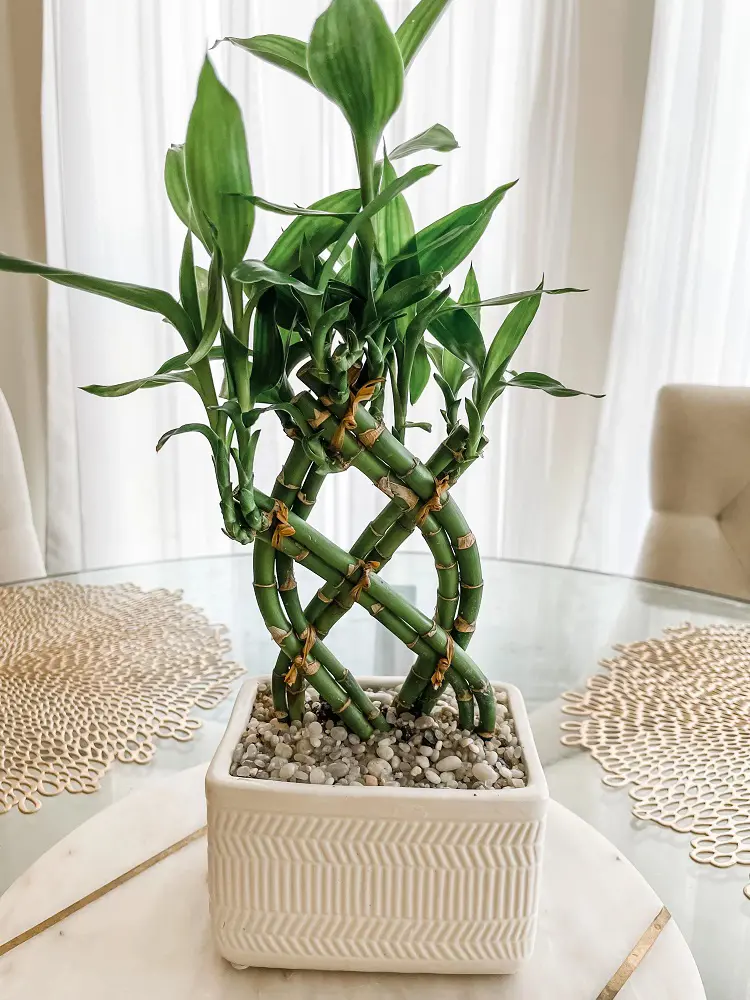
Check if the lucky bamboo has become root-bound by examining the roots. If they circle the pot or appear congested, it's time for repotting. Carefully take the plant out of its current pot. If the roots are tightly packed, gently tease them apart without causing damage.
Choose a larger pot with drainage holes to accommodate the expanding root system. Place fresh, well-draining soil in the new pot. Loosen the roots at the bottom and sides, encouraging them to spread into the new soil. This promotes healthier root growth and nutrient absorption.
To prevent further stress on the plant, switch to distilled or filtered water. This eliminates harmful chemicals and excessive salts present in some tap water. Occasionally flush the soil with distilled water to reduce salt buildup. This helps maintain a balanced environment for the roots, preventing potential issues.
General Care Tips
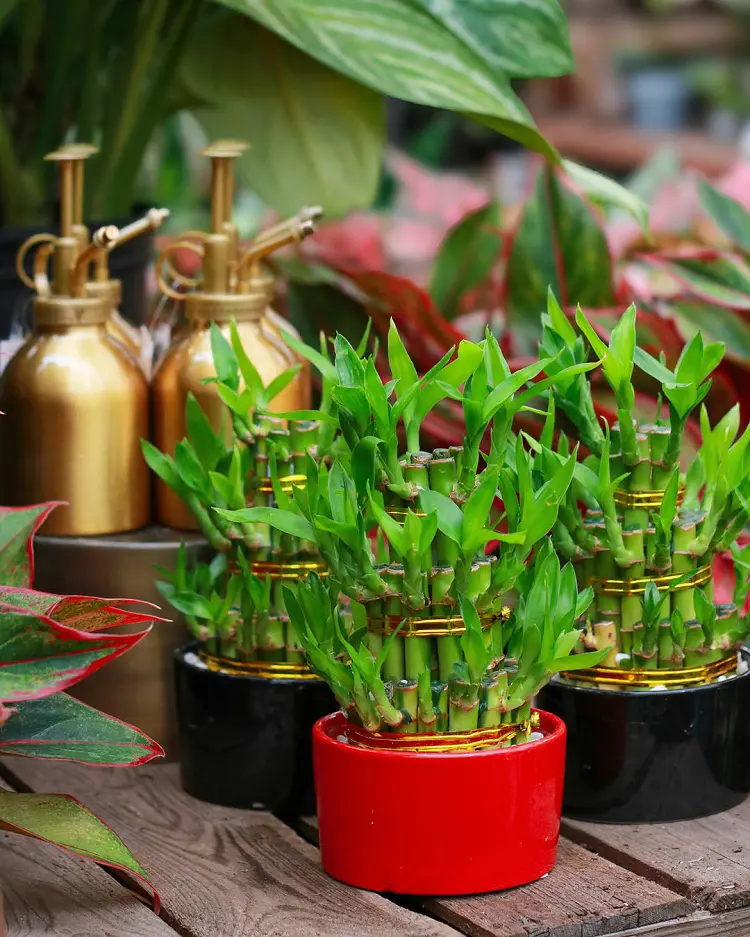
Caring for lucky bamboo is generally considered to be relatively easy, especially in indoor environments. They are considered hardy plants and can tolerate a range of conditions, making them suitable for beginners and experienced plant enthusiasts alike.
However, while they are resilient, they do have specific care requirements to ensure optimal growth and health.
Watering
Lucky bamboo prefers to be consistently moist but not waterlogged. Use distilled or filtered water to avoid harmful chemicals. Let tap water sit for 24 hours to allow chlorine to dissipate. Water when the top inch of the soil feels slightly dry. Empty the saucer beneath the pot to prevent water accumulation.
Fertilization
Use a balanced liquid fertilizer designed for houseplants. Apply fertilizer every 2-4 weeks during the growing season (spring and summer). Dilute the fertilizer according to package instructions to avoid over-fertilizing, which can harm the plant.
Light
Position lucky bamboo in indirect, filtered light. Avoid direct sunlight, which can cause leaf burn. Rotate the plant occasionally to ensure even exposure to light on all sides. Fluorescent or artificial light can be used if natural light is insufficient.
Temperature and Humidity
Lucky bamboo thrives in temperatures between 65-90°F (18-32°C). Maintain consistent temperatures and protect the plant from drafts or sudden temperature changes. Humidity is generally not a major concern, as these plants can adapt to a variety of humidity levels.
Pruning
Trim yellow or damaged leaves with clean, sharp scissors. Keep an eye out for pests and treat them promptly with insecticidal soap if necessary. Wipe the leaves occasionally with a damp cloth to remove dust and keep them clean.
When To Seek Help
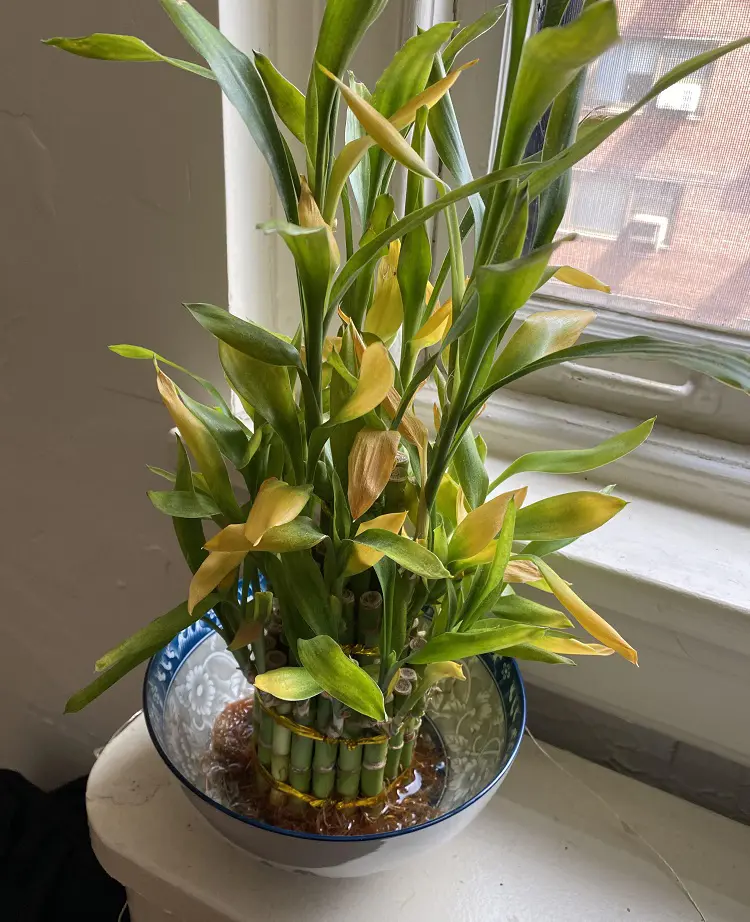
When in doubt or facing challenges beyond your expertise, reach out to local plant nurseries, horticulturists, or botanists. These plant experts can offer valuable insights and assistance in preserving the health and vitality of your lucky bamboo. These are instances where seeking professional help from plant experts is advisable:
- Persistent Yellowing or Decline: If yellowing or other signs of distress persist despite adjustments to care routines, it may indicate an underlying issue requiring expert diagnosis.
- Unidentified Pests or Diseases: If you notice unusual spots, discoloration, or suspect pest infestations that you can't identify or manage, consult with a plant professional for proper identification and treatment.
- Sudden and Severe Changes: Rapid and severe changes in the plant's condition, such as wilting, extensive yellowing, or sudden leaf drop, may indicate a more urgent issue that requires expert attention.
- Stagnant Growth or Lack of New Shoots: If your lucky bamboo shows no signs of new growth over an extended period, a plant expert can assess potential causes and provide guidance on rejuvenation.
- Fertilization Issues: If you experience difficulties with fertilization, including persistent nutrient deficiencies or over-fertilization symptoms, seeking advice from a professional can help tailor a suitable fertilizer regimen.
Conclusion
Understanding why plant leaves turn yellow, like lucky bamboo, is crucial for keeping them healthy and looking good. Yellow leaves show there's a problem, and figuring out the cause helps fix it. Too much water, not enough light, or missing nutrients can make leaves yellow. Checking your plant regularly helps catch issues early, preventing lasting harm.
Adjusting how you water, giving enough light, and adding the right nutrients keep your plant happy. If things get tricky, asking an expert for help ensures your plant gets the right care. Knowing why leaves turn yellow helps your indoor green plants thrive and look their best.
Recent posts
Plant Care
Plant Care
10 Calendula Health Benefits and Possible Side Effects
[image-1] Commonly used in medicinal preparations in several medicine systems, calendula is an annual herb in the daisy family (Asteraceae) originating from southern Europe and the Eastern Mediterranean area. It is suitable for borders, beds cut flow...
Plant Care
How To Plant, Grow and Care Majesty Palm
The majestic palm, scientifically known as Ravenea rivularis, makes for a stunning indoor tree with its lush and grand fronds. Originating from Madagascar's river banks, this resilient houseplant is cherished not only for its beauty but also for its ...
